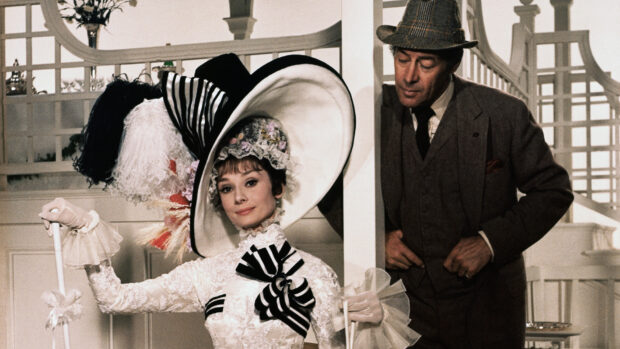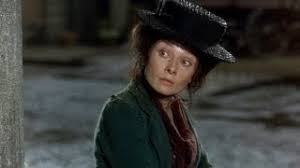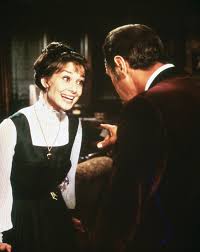The Clues to a Great Story
Por José Luis Lobera • 07/06/2023 • Cine & TV

Among the hundreds of stories we consume daily – from a movie to an advertising commercial – very few leave an indelible mark in our memory. Have you ever stopped to think why we have favorite movies that we remember every detail of, while many others quickly fade into oblivion? What are the clues that define a great story?
In his 2012 TED Talk, Andrew Stanton, renowned director and screenwriter of animated films like «Toy Story» and «Finding Nemo,» shares valuable advice on how to create memorable stories. To exemplify his recommendations, I will use one of my all-time favorite movies as a reference, «My Fair Lady» ( 1964), a musical based on George Bernard Shaw’s play «Pygmalion.»
1. Make them care. Stanton emphasizes the importance of creating characters and situations that the audience can emotionally connect with. If the writer doesn’t care about what they’re telling, it’s unlikely that others will care either.
 The protagonist of «My Fair Lady,» Eliza Doolittle, is a street flower vendor from the lowly neighborhoods of London who, through a fortuitous encounter, becomes the subject of a bet between a phonetics expert, Professor Henry Higgins, and Colonel Pickering, a linguist who has studied Indian dialects. The bet consists of transforming Eliza’s poor diction into that of a high society person within six months. Throughout the movie, the audience empathizes with Eliza’s transformation, who, in the eyes of her educators, is nothing more than an experiment, and they are captivated by her determination to improve herself and rebel against her humble origins.
The protagonist of «My Fair Lady,» Eliza Doolittle, is a street flower vendor from the lowly neighborhoods of London who, through a fortuitous encounter, becomes the subject of a bet between a phonetics expert, Professor Henry Higgins, and Colonel Pickering, a linguist who has studied Indian dialects. The bet consists of transforming Eliza’s poor diction into that of a high society person within six months. Throughout the movie, the audience empathizes with Eliza’s transformation, who, in the eyes of her educators, is nothing more than an experiment, and they are captivated by her determination to improve herself and rebel against her humble origins.
2. Keep them interested. Stanton emphasizes the importance of keeping the audience interested and engaged throughout the entire story. This is achieved through situations that spark curiosity and through a narrative development that generates tension and suspense.
In the case of «My Fair Lady,» Eliza’s transformation into a lady is not without obstacles. She fails her first public appearance test at the Ascot races (her excitement causes her to forget what she has learned and she blurts out a humorous expletive on a horse she’s bet on). Additionally, as Eliza starts developing feelings for Professor Higgins, a young and handsome high society suitor named Freddy Eynsford-Hill appears, presenting an interesting alternative for Eliza.
3. Be truthful. According to Stanton, a great story must be honest and authentic. It is important for the emotions and motivations of the characters to be genuine, as this will make the story resonate more deeply with the audience.
Higgins, for example, is a self-centered man who refuses to acknowledge his feelings for Eliza. Even at the end of the story, when he finally realizes he can’t live without her, he never becomes a romantic character and expresses his love for Eliza with the peculiar arrogance that characterizes him. His character sings:
«Damn, damn, damn,
I’ve grown accustomed to her face. (…)
I was serenely independent and content before we met.
Surely I could always be that way again
And yet I’ve grown accustomed to her look.
Accustomed to her voice.
Accustomed to her face.»
4. Don’t preach, reveal truths. Stanton suggests that instead of trying to teach a lesson directly to the audience, it is more effective to present universal truths through the story. By revealing these truths, the audience can draw their own conclusions and reflections.
 Undoubtedly, the moral of «My Fair Lady» is that love is an uncontrollable force that can transform a person and overcome any social barrier or physical appearance. It can also be interpreted as a reminder that we should not judge people solely based on their appearance or social status, as they may possess surprising qualities within. This moral is subtly conveyed, and even the final scene, when Eliza returns to Professor Higgins’ house, lacks a clear conclusion and is left to the interpretation of the audience. Eliza is in love, but she knows that Higgins will never treat her as an equal, so it is highly likely that Eliza’s happy ending would be opening a flower shop and marrying Freddy instead of staying with Higgins.
Undoubtedly, the moral of «My Fair Lady» is that love is an uncontrollable force that can transform a person and overcome any social barrier or physical appearance. It can also be interpreted as a reminder that we should not judge people solely based on their appearance or social status, as they may possess surprising qualities within. This moral is subtly conveyed, and even the final scene, when Eliza returns to Professor Higgins’ house, lacks a clear conclusion and is left to the interpretation of the audience. Eliza is in love, but she knows that Higgins will never treat her as an equal, so it is highly likely that Eliza’s happy ending would be opening a flower shop and marrying Freddy instead of staying with Higgins.
5. Use the structure of stories. Stanton explains the importance of structure in a story and how elements like the beginning, development, climax, and resolution are essential for capturing and maintaining the audience’s attention. In the case of «My Fair Lady,» the climax is very satisfying as Eliza successfully passes as a Hungarian princess at a royal reception. While Higgins and Pickering congratulate and celebrate their triumph, they ignore Eliza, who seeks solace in Higgins’ mother’s house.
In summary, Andrew Stanton argues that the clues to a great story lie in generating empathy, maintaining the audience’s interest, being authentic, revealing truths, and using an effective narrative structure. As Stanton says in his presentation, «a great story should be inevitable but never predictable.»
 The protagonist of «My Fair Lady,» Eliza Doolittle, is a street flower vendor from the lowly neighborhoods of London who, through a fortuitous encounter, becomes the subject of a bet between a phonetics expert, Professor Henry Higgins, and Colonel Pickering, a linguist who has studied Indian dialects. The bet consists of transforming Eliza’s poor diction into that of a high society person within six months. Throughout the movie, the audience empathizes with Eliza’s transformation, who, in the eyes of her educators, is nothing more than an experiment, and they are captivated by her determination to improve herself and rebel against her humble origins.
The protagonist of «My Fair Lady,» Eliza Doolittle, is a street flower vendor from the lowly neighborhoods of London who, through a fortuitous encounter, becomes the subject of a bet between a phonetics expert, Professor Henry Higgins, and Colonel Pickering, a linguist who has studied Indian dialects. The bet consists of transforming Eliza’s poor diction into that of a high society person within six months. Throughout the movie, the audience empathizes with Eliza’s transformation, who, in the eyes of her educators, is nothing more than an experiment, and they are captivated by her determination to improve herself and rebel against her humble origins. Undoubtedly, the moral of «My Fair Lady» is that love is an uncontrollable force that can transform a person and overcome any social barrier or physical appearance. It can also be interpreted as a reminder that we should not judge people solely based on their appearance or social status, as they may possess surprising qualities within. This moral is subtly conveyed, and even the final scene, when Eliza returns to Professor Higgins’ house, lacks a clear conclusion and is left to the interpretation of the audience. Eliza is in love, but she knows that Higgins will never treat her as an equal, so it is highly likely that Eliza’s happy ending would be opening a flower shop and marrying Freddy instead of staying with Higgins.
Undoubtedly, the moral of «My Fair Lady» is that love is an uncontrollable force that can transform a person and overcome any social barrier or physical appearance. It can also be interpreted as a reminder that we should not judge people solely based on their appearance or social status, as they may possess surprising qualities within. This moral is subtly conveyed, and even the final scene, when Eliza returns to Professor Higgins’ house, lacks a clear conclusion and is left to the interpretation of the audience. Eliza is in love, but she knows that Higgins will never treat her as an equal, so it is highly likely that Eliza’s happy ending would be opening a flower shop and marrying Freddy instead of staying with Higgins.

Comentarios